
Mirabella minensis, synonym Cereus mirabella, is a species of plant in the family Cactaceae. It is endemic to Brazil. Its natural habitat is dry savanna. It is threatened by habitat loss.

Soehrensia schickendantzii is a cactus found in northwestern Argentina in provinces of Salta and Tucumán at elevations of 1600 to 3200 meters.
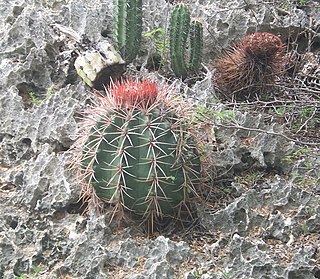
Melocactus caroli-linnaei is a cactus found in Jamaica. When mature it is columnar, up to 1 m (3.3 ft) high. Like all species of Melocactus, it forms a "cephalium" when mature – a dense mass of areoles covered with wool and spines at the tip of the stem. Flowers are produced only from the cephalium.

Cereus jamacaru, known as mandacaru or cardeiro, is a cactus native to central and eastern Brazil. It often grows up to 6 metres high.

Cereus aethiops is a species of cactus found from Uruguay to Argentina.
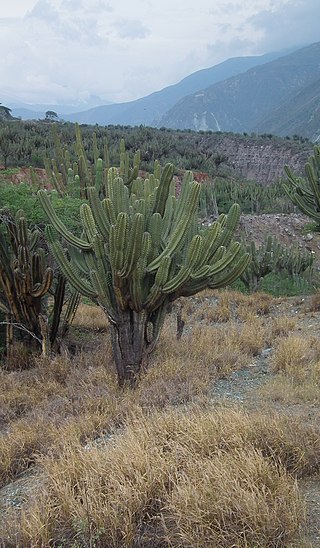
Cereus fricii is a species of Cereus from Venezuela.

Oreocereus trollii, commonly known as the Old Man of the Andes cactus, is a species of cacti native to Argentina and Bolivia. Though listed as Least Concern by the IUCN, the plant is collected extensively, and in some areas is threatened.

Cereus phatnospermus, synonym Cereus kroenleinii, is a species of columnar cactus found in Brazil, Bolivia, and Paraguay.

Cereus vargasianus is a species of columnar cactus found in Peru.

Cereus insularis is a species of columnar cactus found in Brazil.
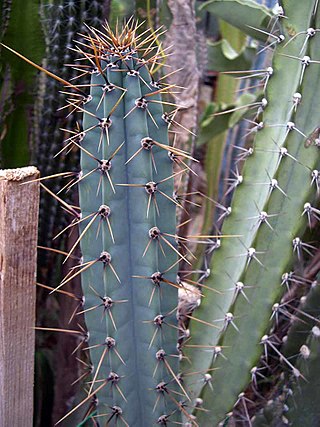
Cereus forbesii is a species of columnar cactus whose native range is Bolivia to N. Central Argentina.
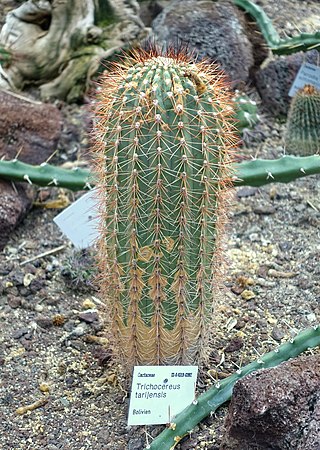
Soehrensia tarijensis, is a species of Soehrensia, in the cactus family. It is native to Bolivia and north western Argentina.

Cereus stenogonus, also known as narrow-angled cereus, is a species of Cereus found in Bolivia, Paraguay and Argentina.
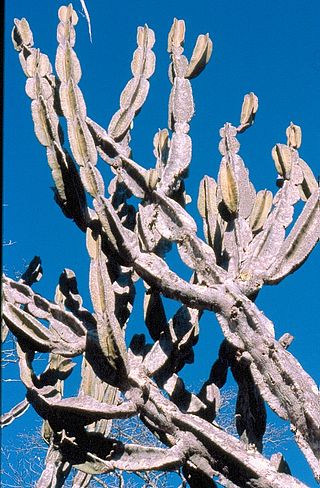
Cereus pierre-braunianus is a species of columnar cactus found in NE Goiás in Brazil.

Cereus lanosus or is a species of columnar cactus found in Central, Cordillera, Concepción, and Paraguarí departments of Paraguay. The plant is found growing in rocky hills at elevations of 250 and 300 meters.

Mirabella estevesii, synonym Cereus estevesii, is a species of columnar cactus found in Minas Gerais, Brazil. The first description was published in 2004 by Pierre Josef Braun as Cereus estevesii.

Neoraimondia arequipensis, synonym Neoraimondia macrostibas, is a tree-like cactus native to western Peru. It was first described in 1835 as Cereus arequipensis.

Haageocereus pseudomelanostele is a species of Haageocereus found in Peru
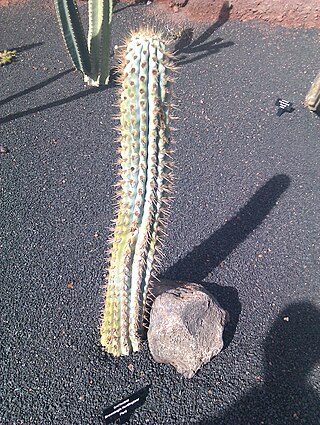
Browningia hertlingiana is a species of Browningia found in Peru.

Cereus fernambucensis is a species of Cereus found in Brazil.





















